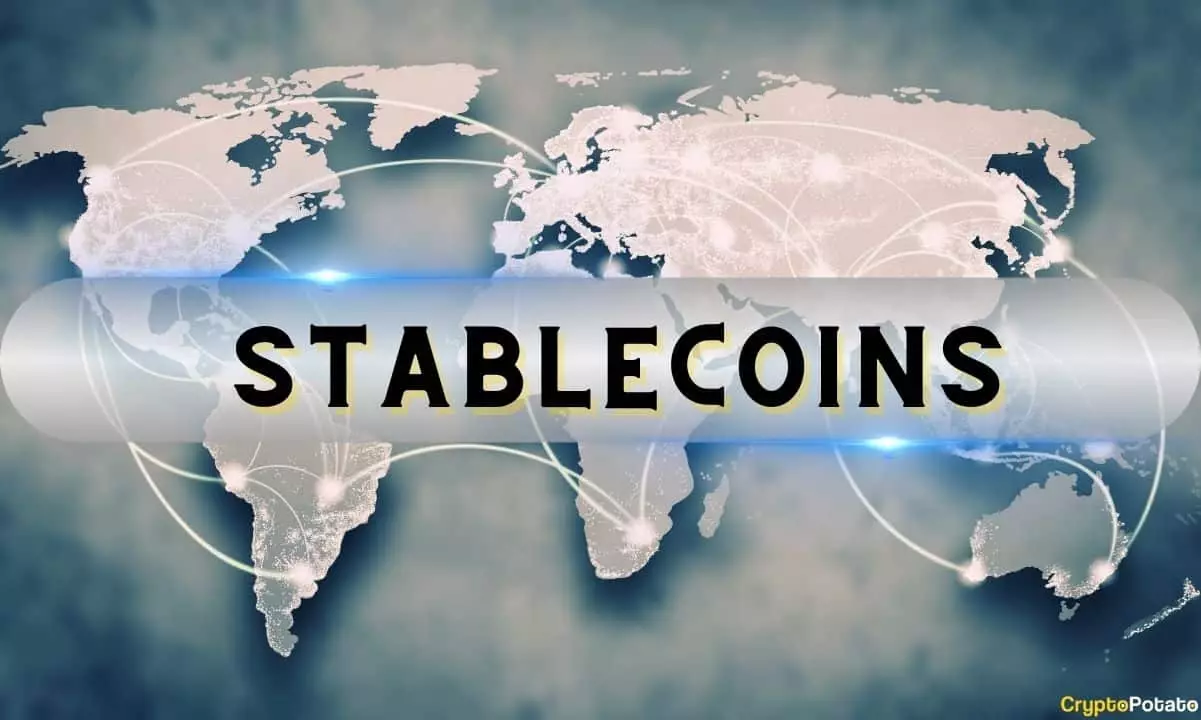The world of cryptocurrency never ceases to astonish, and the notable increase of over 76% in the fiat-backed stablecoin market from 2024 to 2025 speaks volumes about the evolving landscape. An astounding $97 billion was added, propelling the total value to a staggering $224.9 billion. However, this surge raises questions about market dynamics and the uneven participation from various players. When examining the figures, one cannot ignore the dominance of USDT and USDC, which collectively command a whopping 93.5% of the current circulating supply. Their near-monopoly status raises critical questions about the competitiveness of new entrants in the space.
The story of rapid growth becomes even more poignant within the realm of the newcomers. Tokens such as USDtb by Ethena and USD0 by Usual are gaining momentum, but their success is overshadowed by the established giants, who continue to dictate the narrative. This stark contrast underscores the reality that despite robust expansion, there is a lack of diversity in the players capturing market share. It highlights a fundamental challenge for any would-be competitors in the FOMO-heavy world of cryptocurrency: how does one effectively penetrate a market already so heavily saturated by incumbents?
Traditional Finance’s Struggles Against Decentralized Giants
It is painfully evident that traditional finance-backed stablecoins like PayPal’s PYUSD and SocGen’s EURCV are facing an uphill battle. Their lackluster performance in a landscape that thrives on agility and innovation serves as a testament to the barriers posed by traditional institutions. Despite having the familiarity of brand recognition and a so-called regulatory advantage, they have yet to achieve meaningful traction in a market that seems to favor crypto-native solutions. This dichotomy between traditional finance and decentralized assets showcases a fundamental misalignment with current market desires, particularly among younger investors who are gravitating toward platforms that promise not only transparency but also revolutionary financial sovereignty.
The inability for these TradFi-backed claims to resonate with investors results not merely from competition but from a conceptual gap in understanding what modern users seek. People are increasingly tired of the old guard: the glacial pace, the convoluted bureaucratic processes, and the lack of true innovation. Investors want not only tools for liquidity but a life raft against traditional market inefficiencies, yet here we find established institutions floundering in the depths of crypto’s rapid evolution.
Commodity-Backed Tokens: A Flicker of Potential
Interestingly, while fiat-backed offerings seem to dominate the narrative, the commodity-backed segment is not without merit. With a 67.8% increase in market cap, and a total valuation soaring to $1.9 billion, one might argue that this area deserves more attention. Paralleling the rise in gold prices, which many see as a hedge during times of economic uncertainty, these tokens include Tether Gold (XAUT) and PAX Gold (PAXG), collectively controlling a substantial 84% of their market. Yet, despite this growth, they remain a minuscule fraction of the total fiat-backed ecosystem, accounting for only 0.8% of the overall value.
This disparity suggests that while commodity tokens are alluring, they are still far from mainstream adoption. The static issuance of these tokens, even amidst rising valuation, indicates that the adoption is not keeping pace with speculative enthusiasm. Gold as a safe haven is an age-old strategy that benefits from global crises, but will investors turn to digital gold without a complementary mature ecosystem?
The Meteoric Rise of Tokenized Treasuries
A bright spot in this otherwise tumultuous landscape is the overwhelming success of tokenized treasury markets. As of April 2025, this market reportedly hit a dazzling $5.6 billion—an eye-popping 544.8% increase from the previous year. It is the definition of explosive growth and showcases the urgency in investor attitudes toward safer asset classes amid increasing macroeconomic instability. This dramatic spike in value, primarily fueled by the introduction of sweeping trade tariffs, illustrates how responsive investors can be to policy changes that affect their perceived safety.
The quick rise of BlackRock’s BUIDL token, which ascended to command 44% of the market by April, solidifies the reality that institutional players are gradually realizing the importance of digital asset offerings. However, with just over 11,000 addresses participating in this burgeoning market, we cannot ignore the fact that despite its impressive trajectory, tokenized treasuries still face the significant challenge of achieving broader user engagement and adoption.
In a world where innovation frequently outpaces regulation, and market actors continue to evolve, traditional finance must consider not just the future of products, but also the utility and motivations driving a new generation of investors.

